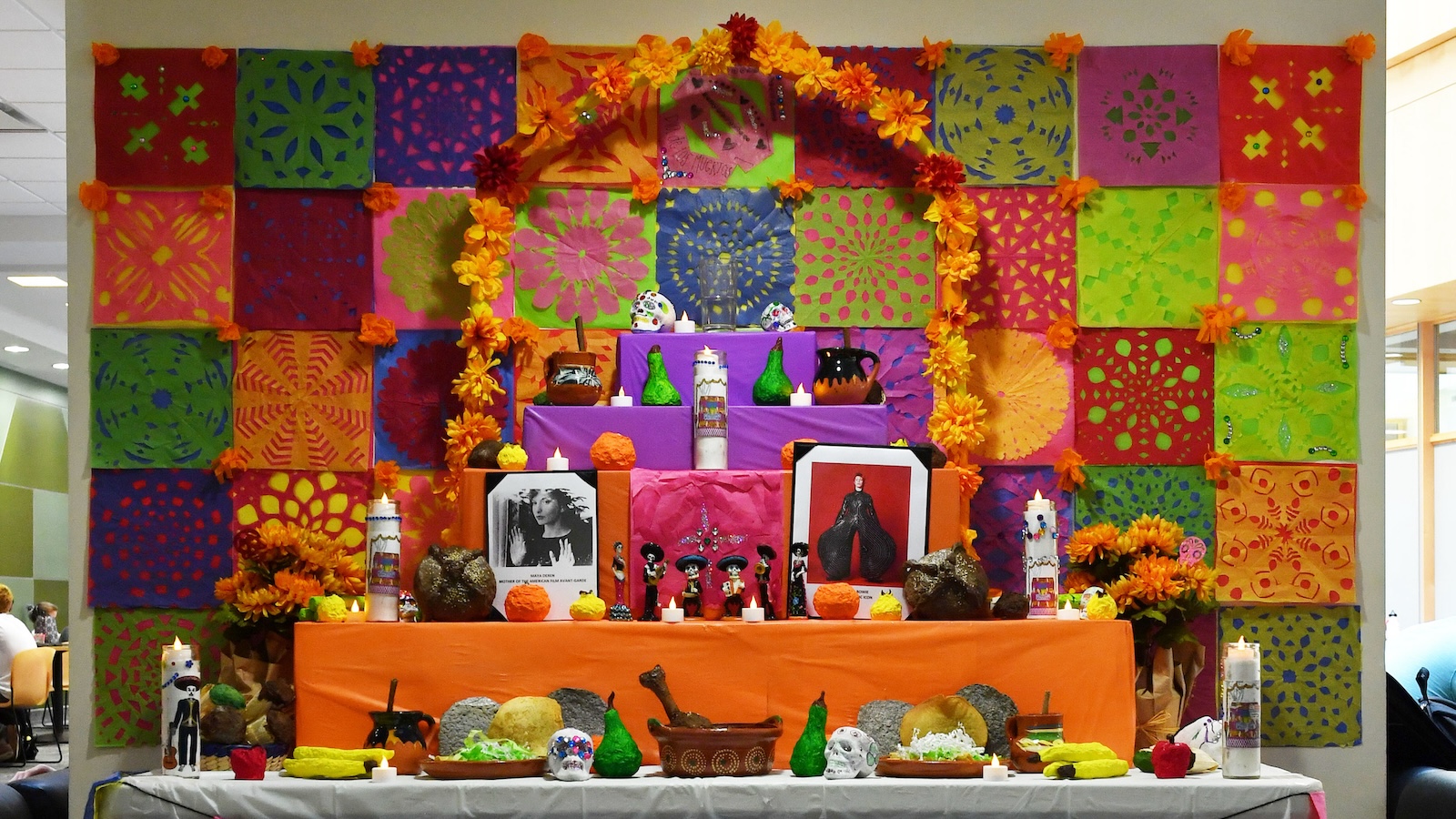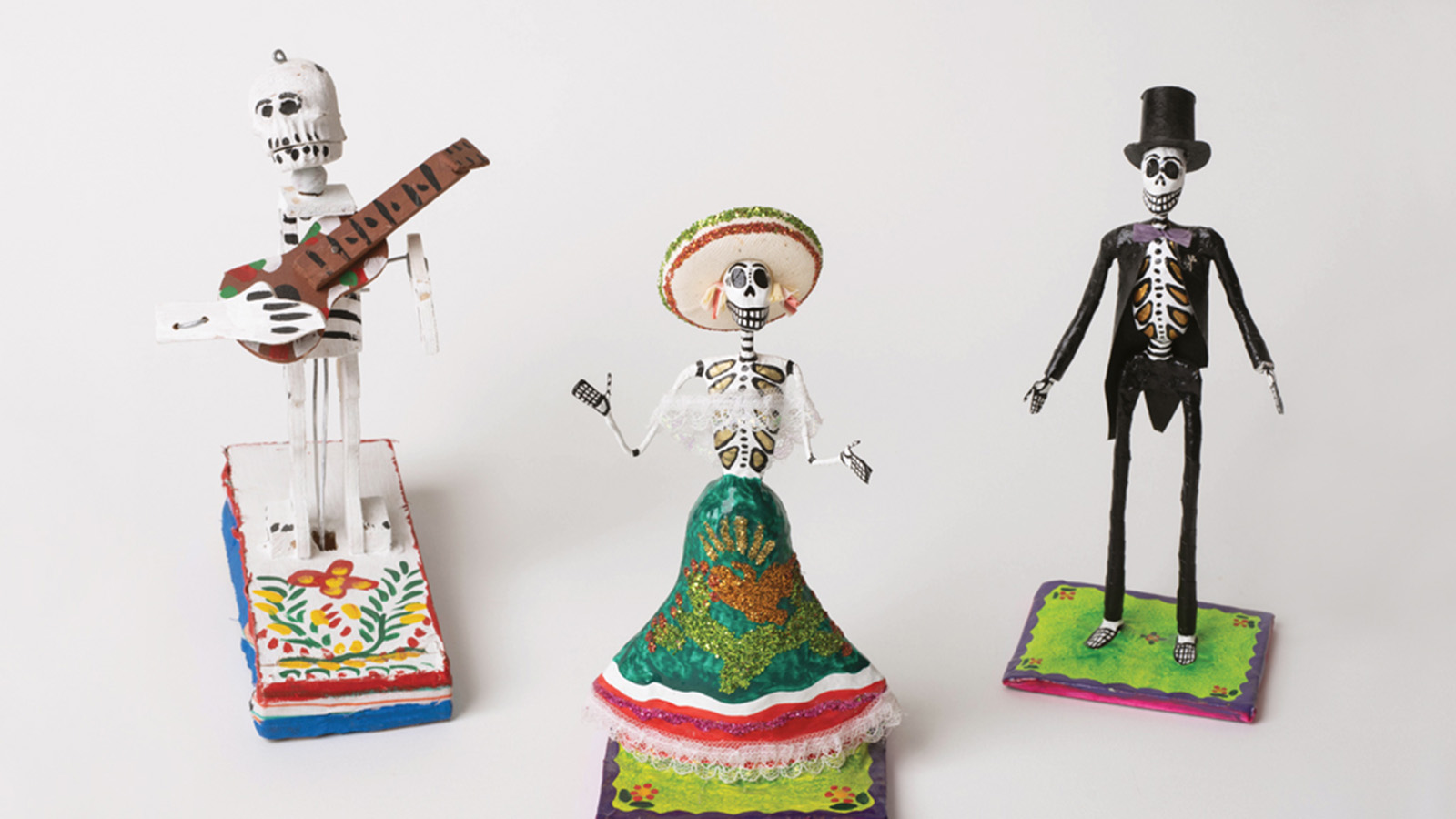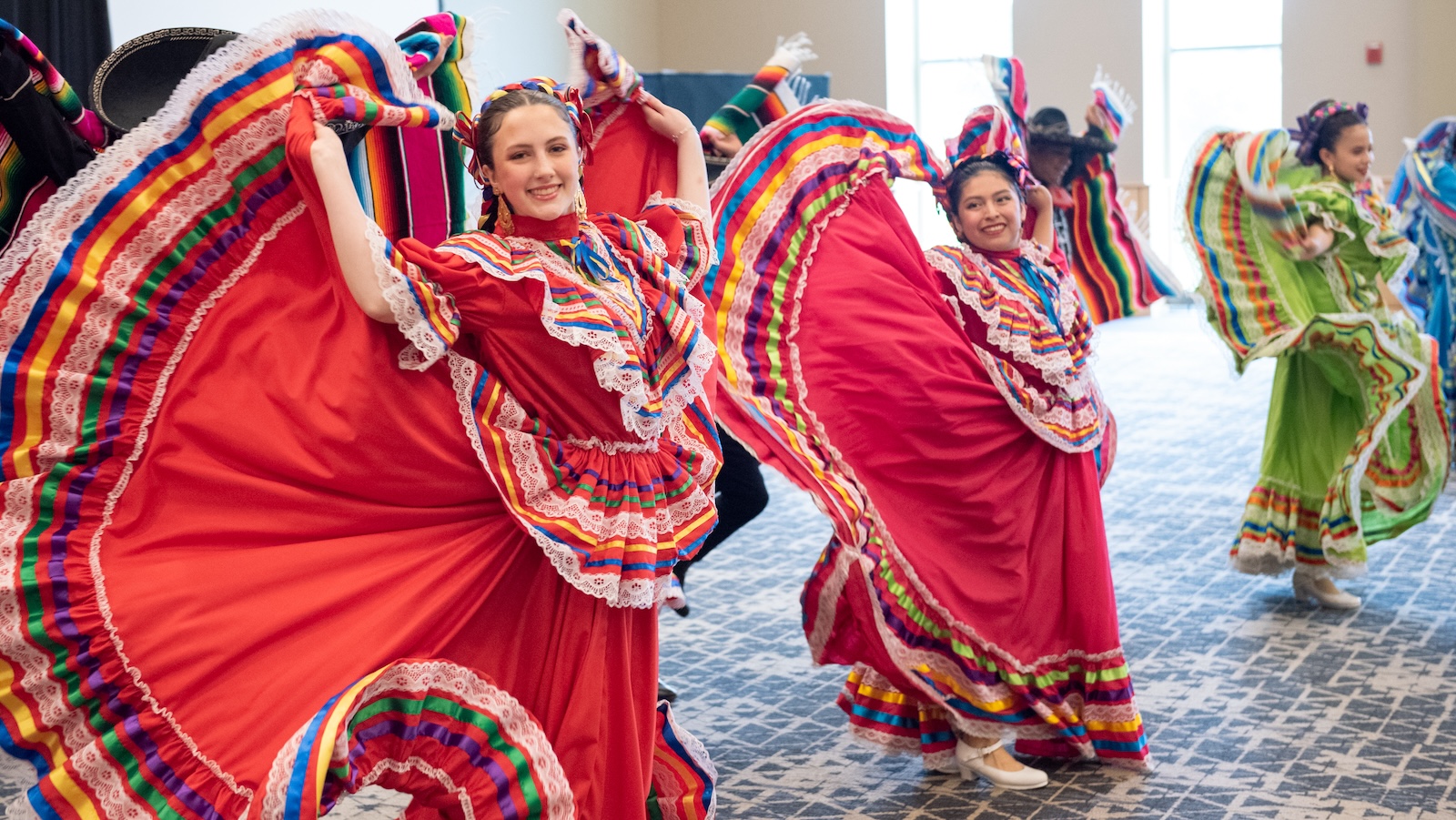Professor explains origins and significance of Día de los Muertos
Get insight into the days that help people confront their mortality and remember their loved ones
Dia de Los Muertos, or Day of the Dead, is celebrated from Nov. 1–2, so major retailers and general observers can fall easily into the trap that it is the Mexican Halloween.
However, sweet treats like calaveras de azucar —skulls made of sugar and decorated with brightly colored icing—are likely the only connection between the two.
Día de los Muertos, or the Day of the Dead is celebrated on November 1 and 2.
Dia de los Muertos is a celebration of life, death and family, and it can provide peace to its celebrants.
“Halloween has a spooky connotation; we talk about witches and candy and skeletons,” says Alejandra Balcazar, Latine/x coordinator in the Center for Student Diversity.
“Dia de Muertos is a tradition of joy. It is colorful, it is meaningful and it is beautiful. We are honoring a piece of life that people neglect to talk about because of fear or a connotation that it is scary. But death is part of life. We all need to be at peace with that part.”

5 Facts About the Meaning of Día de los Muertos
Dia de los Muertos has its roots in Indigenous traditions.
The celebration arises from rituals performed by Indigenous peoples in what is now Mexico and Central America. In particular, the Aztecs would meet with a goddess named Miccaihuitl as part of a death ritual that involved making offerings to the goddess and the deceased. The Aztecs believed the dead were not gone. Instead they had an intimate relationship with the living, and offerings were made to maintain a reciprocal relationship.
Balcazar shared another origin legend.
“It was like Romeo and Juliet,” she says. “He died at war. She was very sad, and she went to the sun to pray. The sun was so touched by her sadness, it turned her lover into a cempoalxochitl—the yellow flower associated with Day of the Dead celebrations—and turned her into a hummingbird. A lot of the symbols that we have come from those legends.”
Popular depictions of Dia de los Muertos aren’t entirely incorrect or appropriated.
The 2017 animated film “Coco” takes viewers along with the protagonist Miguel as he discovers his family history and develops a deeper respect for it. It also depicts the interplay between life and death and portrays it reverently, valuing the traditions and memories ancestors have passed down to those still alive.
Dia de Muertos is a tradition of joy.
Alejandra Balcazar, Latine/x coordinator in the Center for Student Diversity
“‘Coco’ is one of my favorite movies because they did so much research on it,” Balcazar says. “The director lived in Guanajuato City and recreated the historic city center into the movie. So it is very accurate.”
There are many parts to the Dia de los Muertos tradition, and one of the most important is the ofrenda, or altar.
Common features to the celebration are the candy skulls, papel picados (vibrant paper flags), candles, marigolds and a type of bread called pan de muerto. But the holiday is centered on ancestors. Families create ofrendas, or altars, with photographs, foods, possessions or items that call to mind aspects of their ancestors’ personalities to honor them and keep their memories alive.
“I'm very mindful about when I'm putting it together,” Balcazar says. “I'm playing music that I know the person would like. I like trying to remember moments that I had with them and putting that mentally in the altar.”
The holiday celebrates death as an important part of life.
Balcazar began celebrating Dia de los Muertos several years ago after growing up in Colombia, where it is not traditional. She learned more about the holiday from friends who celebrated and found it to be a beautiful experience.
“It is a moment to find your ancestors and people who were important to you and celebrate their lives, the impact that they have in your own story,” she says. “They are still with you. When you are grieving, you can feel like, ‘Oh, I'm never going to see this person again; this is the end of the relationship.’ But connecting the spiritual with everyday life through reconnecting with relatives that have passed can provide comfort.”
Day of the Dead is a holiday that anyone can celebrate, regardless of cultural heritage. Ideally, it should remind us of our commonalities as humans.
For the last several years, Balcazar has organized a Dia de los Muertos celebration at TU that continues to grow. She invites the whole TU community to attend and participate in the celebration.
Everybody has ancestors. Everyone is welcome to join and learn about the beauty of this tradition.
Alejandra Balcazar
“This is Latino centered, but it's not Latino exclusive,” Balcazar says. “Everybody has ancestors. Everyone is welcome to join and learn about the beauty of this tradition. The main message of joy and celebration and love for your friends and family that pass—even pets—is universal. We all have that in our lives.”
The Skeleton Crew
Professor Lea Ramsdell is so well traveled in Spanish-speaking Latin America that it’s easier for her to list the countries she hasn’t yet visited: Costa Rica, Nicaragua, Uruguay, Paraguay and Venezuela. Ramsdell's intense wanderlust means the bookshelves in her office are filled with musical instruments (she teaches a class on Latino cultural identity through music) and cultural keepsakes that she buys on her adventures. She picked up three figurines at a market in Mexico City in 2005, when she led a TU Study Abroad trip there.

Figurines from Mexico watch over Lea Ramsdell’s office.
Day of the Dead is celebrated on November 1 and 2, when art like this is displayed on altars and in windows throughout the country. “It’s a time to remember the dead, but it’s also a time to realize your mortality and not be afraid of it,” Ramsdell says. “It’s also a time to make social commentary. In a way they’re making fun of people in high society. They’re very dressed up and elegant, but they’re skeletons. She looks like she thinks she’s really something, but she’s still mortal after all.”
The design of the female skeleton’s dress conjures nationalistic images, Ramsdell says. Both the Mexican flag and the dress feature a green, white and red color scheme and include an image of a cactus with an eagle perched atop it eating a serpent. “That was the signal for the Aztecs, who were a nomadic tribe at one point,” she says. “They were to search for this cactus with an eagle on top of it eating a serpent and build their homeland there.”
The figures are made of papier-mâché, so they’re extremely light. Ramsdell thinks she bought them for $15 or $20—pricey by Mexican standards at the time. “I find it fascinating to go to different cultures and see the kinds of things that are important to the people there,” she says. “Popular culture appeals to me. I studied literature and civilization, and I love that, but something about the common person and what they find important, I’m really drawn to that. That’s exactly what this is about. These are an expression of the common person, not necessarily a trained professional artist. This wouldn’t be considered high art, but that’s exactly why I like it.”
This article was originally published in 2022.
